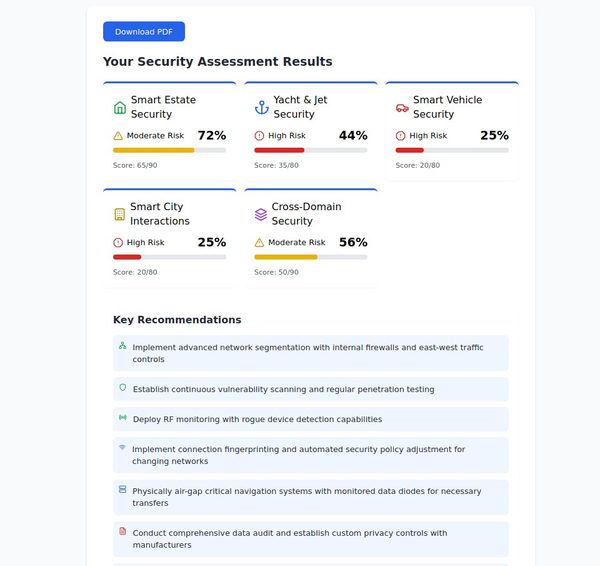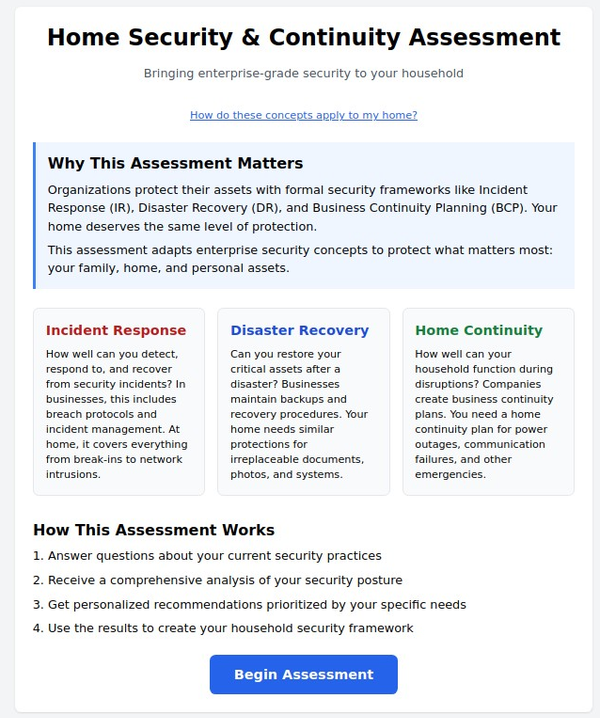How to Build a Secure and Private Smart Home in 2024

As smart home technology continues to evolve, creating a connected living space that enhances convenience while safeguarding privacy and security has become increasingly important. This comprehensive guide will walk you through the process of building a cutting-edge smart home in 2024 that prioritizes data protection and cybersecurity.
Choosing a Secure Smart Home Ecosystem
The foundation of any smart home is its ecosystem. In 2024, the major players remain:
- Apple HomeKit
- Google Home
- Amazon Alexa
When selecting an ecosystem, consider the following security factors:
- Apple HomeKit offers strong encryption and local processing for many devices, minimizing data sent to the cloud. It's the most privacy-focused option but has a more limited device selection.
- Google Home provides robust AI capabilities and wide compatibility, but collects more user data. Review Google's privacy controls carefully.
- Amazon Alexa has the broadest device support but also gathers significant usage data. Examine Alexa's privacy settings closely.
For maximum privacy, consider open-source alternatives like Home Assistant that keep all your data local. However, these require more technical setup.
Whichever ecosystem you choose, enable two-factor authentication and review all privacy settings.

Securing Your Network
A secure smart home starts with a protected network:
- Use a modern Wi-Fi 6 or 6E router with the latest security features.
- Enable WPA3 encryption for the strongest Wi-Fi protection.
- Create a separate IoT network to isolate smart devices from your main network.
- Use a VPN on your router to encrypt all internet traffic.
- Keep your router's firmware updated to patch security vulnerabilities.
Essential Smart Home Devices for 2024
When selecting devices, prioritize those with strong security features and regular updates. Here are some top picks for 2024:
Smart Speakers and Displays
- Apple HomePod mini: Offers excellent privacy with local processing.
- Google Nest Hub (2nd gen): Features an on-device machine learning chip for faster, more private responses.
Smart Lighting
- Philips Hue: Provides end-to-end encryption and frequent security updates.
- Nanoleaf Essentials: Supports Thread networking for improved security and reliability.
Smart Locks
- Level Lock+: Works with HomeKit for enhanced privacy and supports Apple Home Keys.
- August Wi-Fi Smart Lock (4th gen): Features auto-lock/unlock and two-factor authentication.
Security Cameras
- Logitech Circle View: Designed for HomeKit Secure Video with on-device people/pet/vehicle detection.
- Eufy SoloCam E40: Offers local storage and AI processing without cloud dependence.
Smart Thermostats
- ecobee SmartThermostat Premium: Includes air quality monitoring and works with most ecosystems.
- Nest Learning Thermostat: Offers advanced energy-saving features but requires careful review of Google's privacy settings.
Smart Sensors
- Eve Door & Window: Uses Thread networking for improved security and works with HomeKit.
- Aqara Motion Sensor P1: Offers long battery life and works with major ecosystems.
Implementing Privacy and Security Best Practices
To maintain a secure smart home:
- Regularly update all devices to patch security vulnerabilities.
- Use strong, unique passwords for each device and account.
- Enable two-factor authentication wherever available.
- Review and limit data sharing settings for each device and service.
- Disable unused features like always-listening microphones when not needed.
- Use a password manager to securely store and generate complex passwords.
- Implement network segmentation to isolate smart home devices from sensitive data.
- Consider a hardware firewall for advanced network protection.
- Regularly audit connected devices and remove any that are no longer in use.
- Educate household members on smart home security best practices.
Enhancing Privacy with Local Processing
To minimize data sent to the cloud:
- Choose devices with local processing capabilities when possible.
- Use HomeKit Secure Video for privacy-focused camera recordings.
- Set up a local voice assistant like Mycroft for private voice control.
- Consider a home server like Home Assistant for local smart home management.


Securing Remote Access
If you want to control your smart home while away:
- Use a VPN to securely access your home network.
- Enable two-factor authentication for any remote access services.
- Limit remote access permissions to only essential functions.
- Regularly monitor access logs for any suspicious activity.
Future-Proofing Your Smart Home
As technology evolves, keep these factors in mind:
- Adopt Matter-compatible devices for improved interoperability and security.
- Consider Thread-enabled products for a more robust and secure network.
- Stay informed about emerging privacy regulations that may affect smart home data.
- Keep an eye on advancements in AI and edge computing that could enhance local processing capabilities.
Opensource and DIY Smart Home Solutions
there are several open source and DIY options for smart home hubs that could work well while prioritizing privacy and security:
- Home Assistant - This is one of the most popular open source home automation platforms. It can run on a Raspberry Pi and supports integration with over 1000 different smart home devices and services. It stores data locally rather than in the cloud for enhanced privacy.
- OpenHAB - Another leading open source home automation platform that can run on various systems including Raspberry Pi. It offers extensive device compatibility and customization options.
- Domoticz - An open source home automation system that runs on Linux, macOS, and Windows, including Raspberry Pi. It supports various protocols and devices.
- ioBroker - A free IoT platform for home automation with over 500 possible integrations. It works well on Raspberry Pi and other systems.
- Raspberry Pi as a hub - You can use a Raspberry Pi as the basis for your own DIY smart home hub, running software like Home Assistant or OpenHAB. This gives you full control over the system.
- Zigbee-based solutions:
These open source and DIY options allow you to create a smart home system with enhanced privacy and security by keeping data local and giving you full control over the software and integrations. Using a Raspberry Pi or other local hardware as the hub further increases privacy compared to cloud-based commercial solutions.
Conclusion
Building a secure and private smart home in 2024 requires careful consideration of device selection, network security, and ongoing maintenance. By following these guidelines and staying informed about the latest security best practices, you can create a connected living space that enhances your life while protecting your personal data and privacy.
Remember, the most secure smart home is one that balances convenience with thoughtful implementation of privacy-preserving technologies. Regularly reassess your smart home setup to ensure it continues to meet your security and privacy needs as both threats and technologies evolve.
Citations:
[1] https://www.pcmag.com/picks/the-best-smart-home-devices
[2] https://www.legrand.ca/ideas/blogs/smart-home-trends-2024
[3] https://kbbonline.com/trends-inspirations/fixr-report-on-smart-home-tech-trends/154255/
[4] https://www.cnet.com/home/smart-home/best-smart-home-devices/
[5] https://rapidfixproappliance.com/blog/smart-home-security-tips
[6] https://www.good3nergy.com/post/the-top-smart-home-security-trends-to-watch-in-2024
[7] https://cybrpro.com/best-smart-home-devices-for-2024/
[8] https://www.mcafee.com/learn/how-to-secure-your-smart-home-a-step-by-step-guide/
[9] https://www.canarytrap.com/blog/smart-homes-security/
[10] https://staysafe.org/home-safety/home-security-for-smart-homes-integrating-security-with-home-automation/
[11] https://community.trustcloud.ai/docs/grc-launchpad/grc-101/governance/data-privacy-in-the-age-of-iot-securing-connected-devices-in-2024/
[12] https://money.com/how-to-set-up-a-smart-home/
[13] https://reolink.com/blog/how-to-make-a-smart-home/






